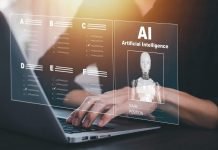For many years now, employee engagement has become a board-level priority, but of late it’s become a business imperative of the highest level. Winning in the marketplace starts with winning in the workplace. That’s according to a study from West Monroe Partners, where a majority of business professionals surveyed indicated an empowered workforce is critical to succeed in supporting a winning customer experience. The key to an empowered workforce, say researchers, is “cultivating a culture of engagement, intentionally, designing employee experiences, and supplying employees with the tools needed to do their jobs.”
But how do HR and business leaders move the needle in this area?
Organizations must “get real” about taking substantial steps toward evaluating and improving the employee experience at work.
While organizations have embraced the notion of the “data-driven organization,” we must move to the next echelon — the employee-driven organization. To create the employee-driven organization, organizations must capture and leverage employee-driven data to see and understand the work experience from employees’ perspective.
Work Defies Our Understanding
The task of improving work starts with benchmarking work patterns today. However, most organizations don’t know how work takes place in their organization. In today’s Knowledge Economy, where work output is no longer solely tied to machines and material, it’s more difficult to qualify and quantify work.
In recent years, we’ve seen a growing importance on technology and tools to gauge employee engagement, including 360-degree performance appraisals, peer-to-peer recognition programs, and methods to understand the Voice of the Employee via structured and unstructured means.
Historically, information around work productivity and employee engagement has been captured via manual recording (time cards), surveys and questionnaires. These methods lack valuable context and timeliness, leaving business leaders to guess/theorize, make assumptions, and/or rely on manual input — the accuracy of which is dependent on employee compliance and/or the emotion quotient – i.e. whether an employee is having a good or bad day and/or how they feel at that moment.
However, to build a true data-driven decision-making culture, businesses must move away from manual, self-reporting to automated data capture and analysis, and find ways of capturing data to formulate real-time and continuous insights to drive better business decision-making around what is for most businesses their biggest investment — their workforce.
Analytics: Deconstructing the Employee Experience
Analytics have been used in HR for many years for reporting regarding recruiting, interviewing, hiring and exit interviews. Today, the use of analytics is being expanded to support the business imperative of employee engagement and employee experience to foster improved retention and development of employees and to ensure a rewarding, inspiring, and supportive work environment.
To this end, a newer type of offering known as knowledge workforce analytics is providing the requisite insights to drive improvements in these areas. And its ability to integrate the notion of mental and emotional wellbeing into performance management is helping organizations create environments where engaged and resilient teams feel empowered to thrive.
Knowledge workforce analytics evolved from Workforce Analytics, which focused on repetitive work production in BPOs and call centers. Originally, its primary purpose was in measuring productivity. Today, it has been expanded to encompass a broad range of roles in the organization that focus on non-repetitive work streams such as software development, engineering, and marketing. Also, its adoption, use case and scope has moved beyond measuring productivity to encompass other objectives such as the foundation for process improvement, understanding work “wastage,” and employee engagement trends and opportunities. As such, it’s moved from an HR tool to a business transformation tool.
Advanced workforce analytics measures and analyzes the digital output generated by individual and work group activity. Software automates the collection of the digital signals that an employee emits when using technology and systems and combines them with analytics that equip senior executives with reporting and analysis.
Knowledge workforce analytics seeks to understand work from the employee’s perspective What do employees have to deal with on a day-to-day basis to do their work, and do they have the right tools, the right amount of collaboration, and a conducive and supportive work environment to do it? The analytics analyze work patterns on a day-by-day and even minute-by-minute basis.
For the individual employee, knowledge workforce analytics can identify what takes focus away from high priority work and identify practices that harm efficiency such as multitasking and meeting overload. For managers, the data can be helpful to understand and mitigate workload issues by better allocating work and staffing.
Organizations can now uncover bottlenecks and eliminate elements of work that are painful, time-consuming and non-value added, so that people can focus on what they love to do, to ensure a highly engaged workforce. And organizations can refine workflows to make teams more productive to run more lean, productive, and profitable operations. Knowledge workforce analytics also enables organizations to compare work patterns across business units, projects, or roles to spot trends to identify best practices and issues such as poor management or training deficiencies.
With this employee data-driven approach, businesses can also now understand employee work pattern data to support elements of performance evaluation, leadership development, hiring and promotion, job design, and compensation. This transforms HR from subjective to objective and changes the dynamic from oversight (hierarchical) to collaborative. All people policies and processes now revolve around the intersection of employees and work.
As well, as businesses move forward in recalibrating their organizations for the Future of Work, ushering in artificial intelligence, software robotics, machine learning, and other emerging technologies, successful transformation requires a focus on man and machine and, specifically, the space between them. Knowledge workforce analytics – by minding the gap at the intersection of man and machine – can be especially helpful in providing insights to catalyze workplace automation initiatives and associated workforce modernization.
Past performance (when understood) can be used to predict future work/talent trends so businesses can predict and proactively plan for what’s ahead – in addition to learning from and optimizing around past performance.
One of the greatest benefits of knowledge workforce analytics is that it enables both HR and functional leaders to evaluate the same data set and be in “lock-step” to manage and utilize human resources to their full potential.
As a result, the technology is being used to support transformational use cases and progressive HR policies to attract and retain top talent.
By supporting rich and ongoing continuous improvement from the employee-data driven workplace, knowledge workforce analytics is helping to guide business on the means to gain competitive advantage through improved employee engagement.
For more such Updates Log on to www.hrtechcube.com
ABOUT THE AUTHOR

Brad Killinger
Brad Killinger is the CEO of Sapience Analytics. Providing a fully automated and real-time multifaceted view of Enterprise Effort, Sapience supports data-driven digital transformation – enabling businesses to build a better version of their organization every day for ultimate agility and competitive advantage. Sapience is used by more than 90 companies in 18 countries worldwide, with over 1 trillion work hours analyzed to date.













